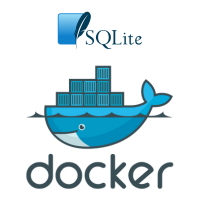Installing Docker Engine and Docker Compose
Docker is a service that use OS-level virtualization to deliver software in packages called containers. Containers are isolated from one another and bundle their own software, libraries and configuration files; they can communicate with each other through well-defined channels. Because all of the containers share the services of a single operating system kernel, they use fewer resources than virtual machines.
Prerequisites
Enable virtualization on the computer bios (usually it's already enabled).
Set up the repository
Before you install Docker Engine for the first time on a new host machine, you need to set up the Docker repository. Afterward, you can install and update Docker from the repository.
Update the apt package index and install packages to allow apt to use a repository over HTTPS:
sudo apt-get update && sudo apt-get install apt-transport-https ca-certificates curl gnupg lsb-release
Add Docker’s official GPG key:
curl -fsSL https://download.docker.com/linux/debian/gpg | sudo gpg --dearmor -o /usr/share/keyrings/docker-archive-keyring.gpg
Use the following command to set up the stable repository:
echo "deb [arch=amd64 signed-by=/usr/share/keyrings/docker-archive-keyring.gpg] https://download.docker.com/linux/ubuntu $(lsb_release -cs) stable" | sudo tee /etc/apt/sources.list.d/docker.list > /dev/null
Install Docker Engine
Update the apt package index and install the latest version of Docker Engine and containerd:
sudo apt-get update && sudo apt-get install docker-ce docker-ce-cli containerd.io
Verify that Docker Engine is installed correctly by running the hello-world image:
sudo docker run hello-world
Manage Docker as a non-root user
The Docker daemon binds to a Unix socket instead of a TCP port. By default that Unix socket is owned by the user root and other users can only access it using sudo. The Docker daemon always runs as the root user.
If you don’t want to preface the docker command with sudo, create a Unix group called docker and add users to it. When the Docker daemon starts, it creates a Unix socket accessible by members of the docker group.
To create the docker group and add your user:
Create the docker group:
sudo groupadd docker
Add your user to the docker group:
sudo usermod -aG docker $USER
Log out and log back in so that your group membership is re-evaluated (sometimes restart is required).
Verify that you can run docker commands without sudo:
docker run hello-world
This command downloads a test image and runs it in a container. When the container runs, it prints an informational message and exits.
Install Docker Compose
On Linux, you can download the Docker Compose binary from the Compose repository release page on GitHub. Follow the instructions from the link, which involve running the curl command in your terminal to download the binaries. These step-by-step instructions are also included below.
Run this command to download the current stable release of Docker Compose:
sudo curl -L "https://github.com/docker/compose/releases/download/1.28.6/docker-compose-$(uname -s)-$(uname -m)" -o /usr/local/bin/docker-compose
To install a different version of Compose, substitute 1.28.6 with the version of Compose you want to use.
Apply executable permissions to the binary:
sudo chmod +x /usr/local/bin/docker-compose
Test the installation:
docker-compose --version




0 Comments